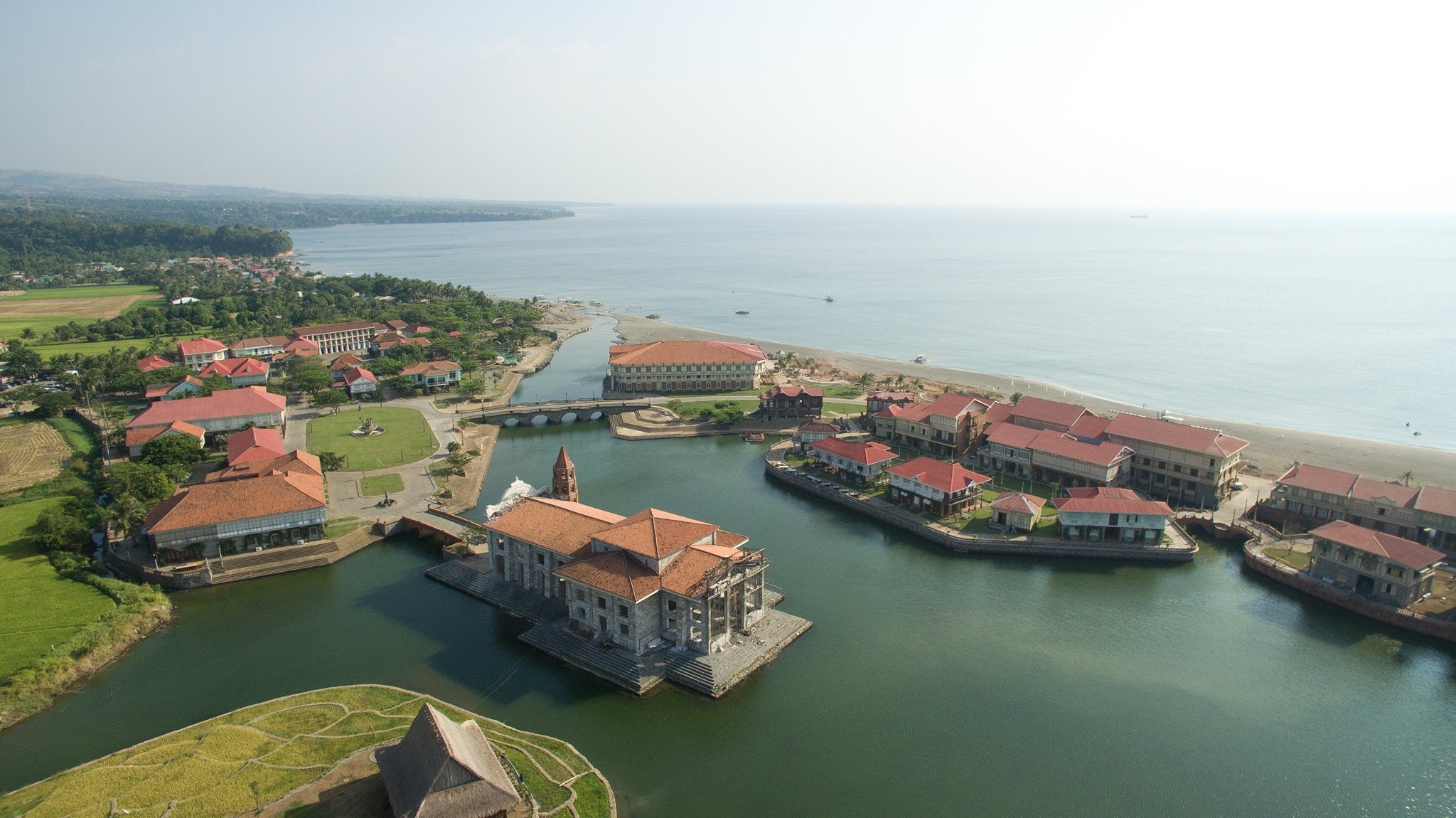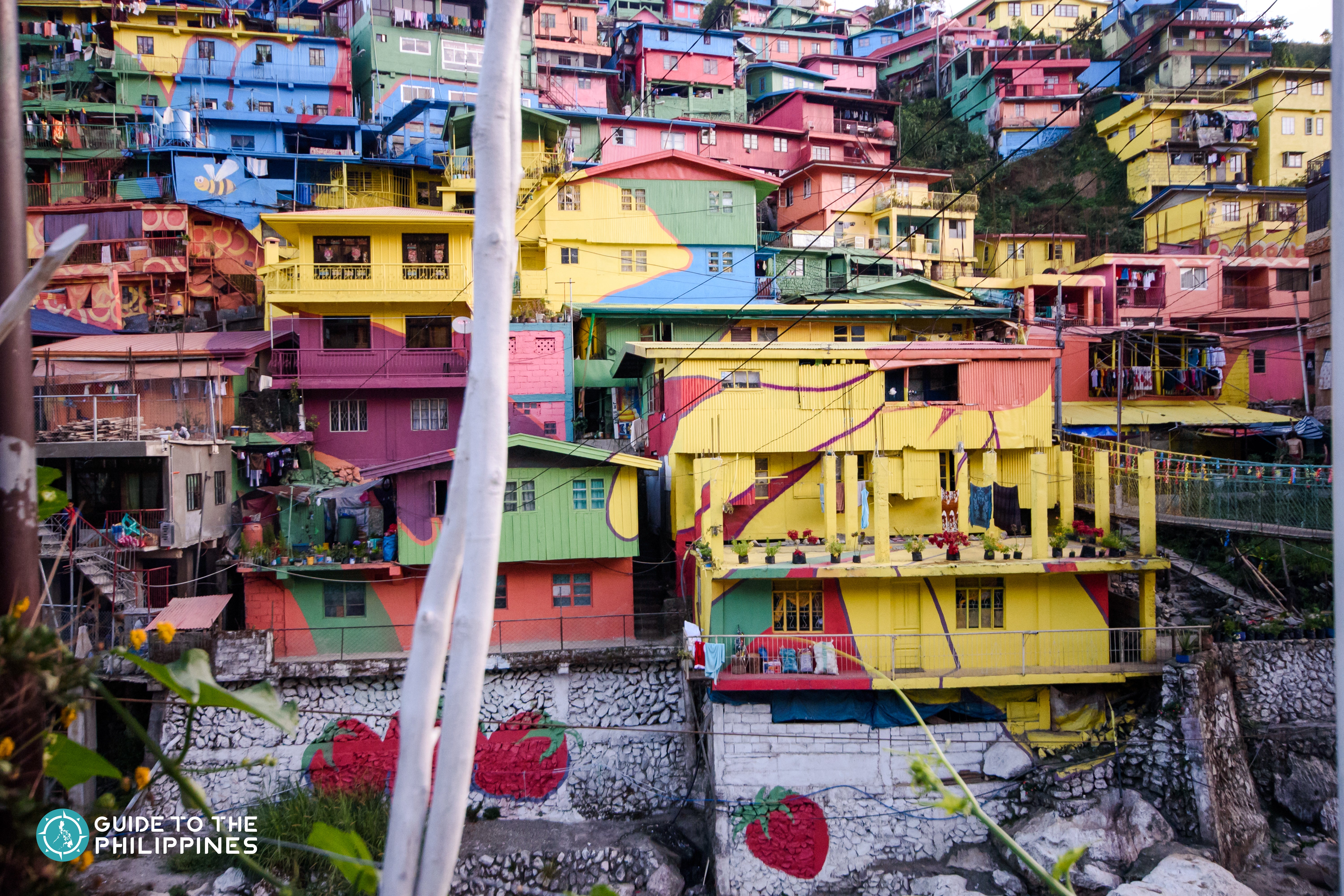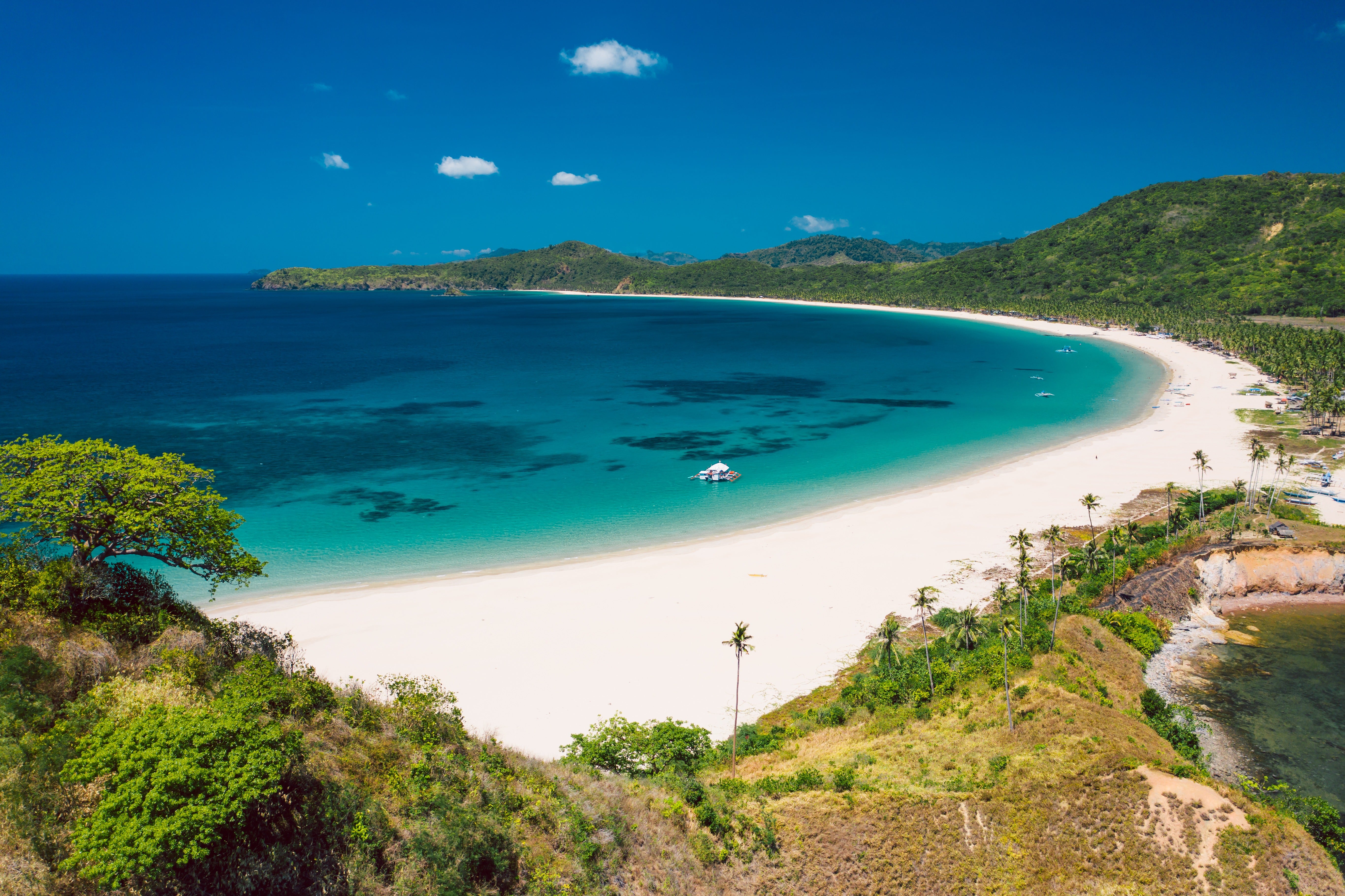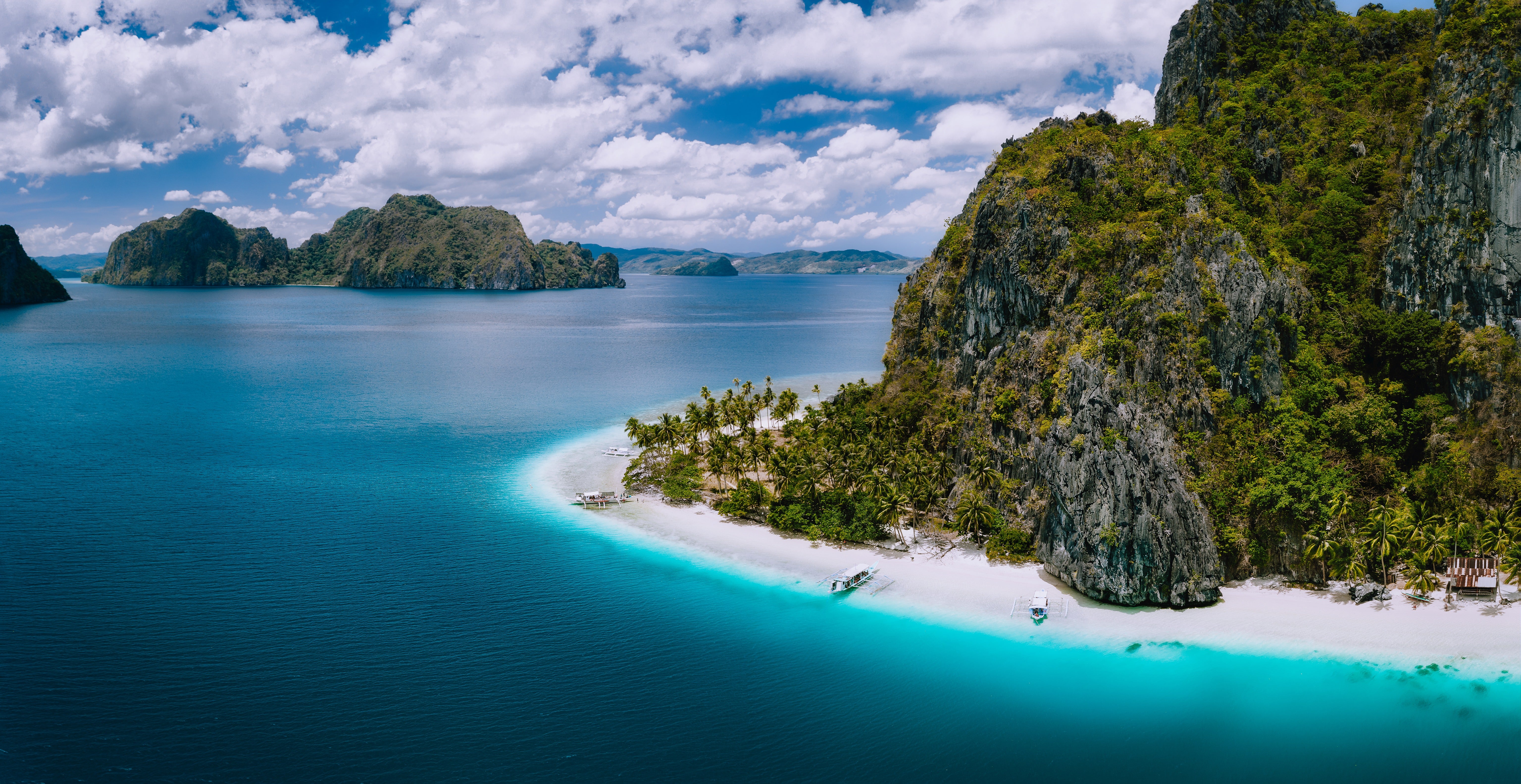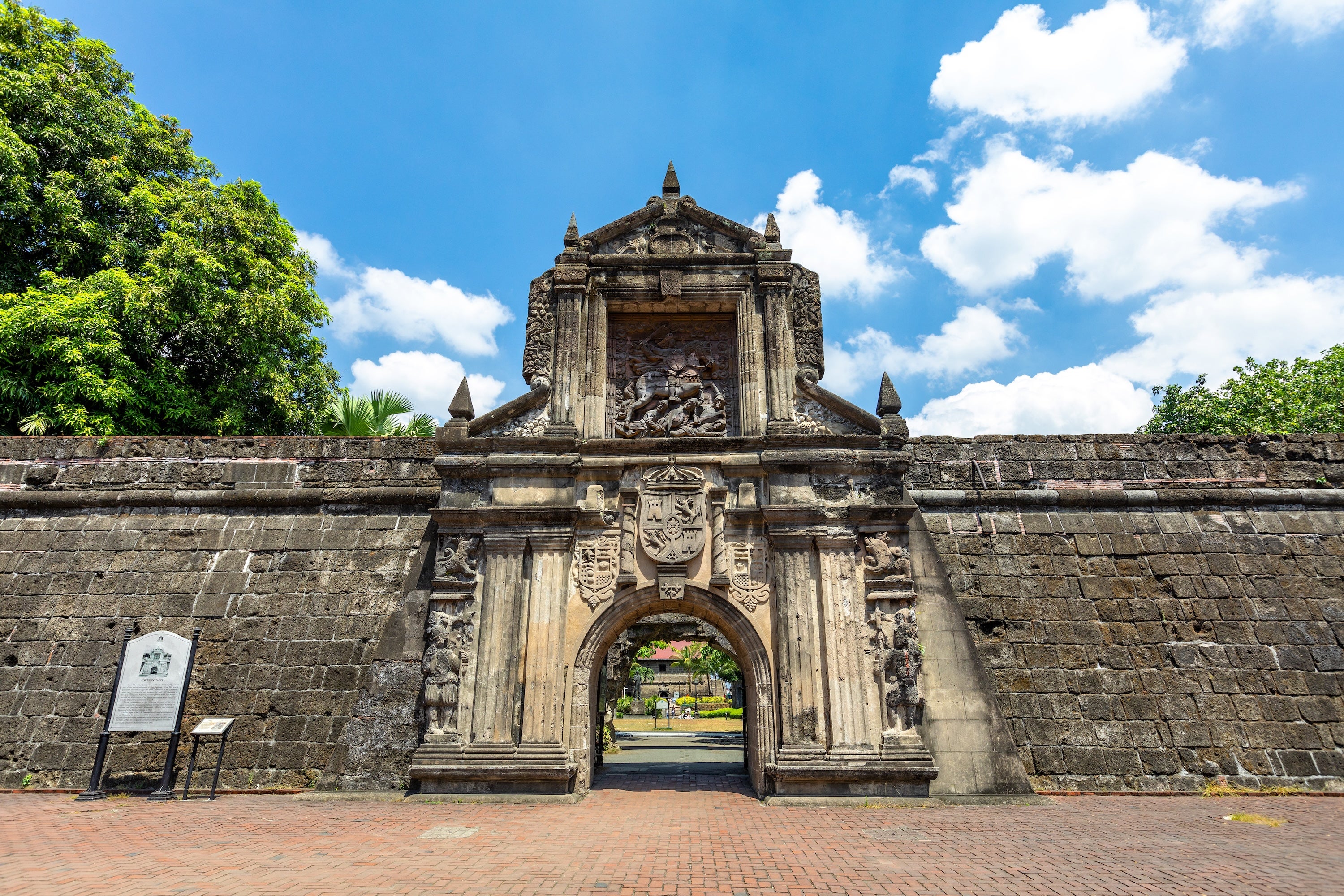
The Philippines, with over 7,000 islands, is an ideal destination for travelers seeking nature, culture, and adventure. Beyond its postcard-perfect beaches and tropical islands, the country also offers a deep dive into its rich history and enduring faith, best experienced through its many heritage and pilgrimage sites.
Catholicism, introduced during more than 300 years of Spanish colonization, remains a cornerstone of Filipino culture. Today, the Philippines is home to the largest Catholic population in Asia, and its century-old churches stand as timeless witnesses to wars, earthquakes, and centuries of devotion.
For travelers interested in exploring the country’s spiritual heritage, visiting these sacred landmarks is a meaningful experience. You can join historical tours that highlight the architectural grandeur of Spanish-era cathedrals, or embark on pilgrimage tours during Holy Week to follow the Visita Iglesia tradition—visiting multiple churches in a day while reflecting on each of the Stations of the Cross.
Even during the rainy season, when outdoor adventures are limited, visiting these beautiful churches offers a peaceful and inspiring way to spend your day. Whether you’re drawn to Baroque masterpieces, seaside chapels, or modern hilltop sanctuaries, you’ll find countless sacred spaces that reveal the soul of the Philippines.
Start planning your journey through faith and history with guided tours in the Philippines or all-inclusive vacation packages to make the most of your visit.
Below, explore our list of the most beautiful and must-visit churches in the Philippines that deserve a spot on your travel itinerary.
Key Takeaways
-
The Philippines is home to many centuries-old churches that showcase Spanish colonial architecture, local artistry, and deep Catholic devotion.
-
Each region has its own must-visit church, from the Manila Cathedral and San Agustin Church in Intramuros to the Miagao and Paoay Churches listed as UNESCO World Heritage Sites.
-
Many of these churches are known for their Baroque or Gothic influences, intricate facades, and historical significance as centers of faith and community life.
-
Visiting these sacred landmarks offers travelers a chance to learn about the Philippines’ culture, history, and religious traditions beyond its famous beaches and islands.
-
You can explore these churches through guided heritage and pilgrimage tours for a deeper and more meaningful experience.
-
A trip to these iconic churches is one of the best ways to appreciate the artistry, spirituality, and enduring resilience of the Filipino people.
14. Mt. Carmel Chapel (Batanes Island)
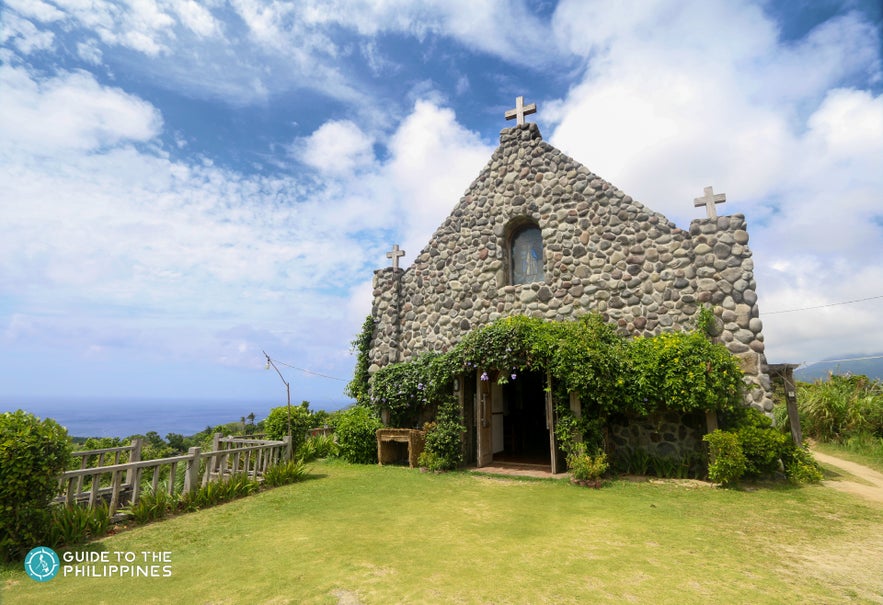
Perched on a scenic hilltop, the Mt. Carmel Chapel, also known as Tukon Church, is one of the most peaceful and charming Batanes tourist spots. Built using the same stone-and-lime craftsmanship as traditional Ivatan houses, it perfectly complements Batanes Island’s windswept hills and panoramic sea views.
The chapel was constructed by the family of Florencio Abad, a native of Batanes and former Secretary of the Department of Budget and Management. Inside, the walls are adorned with paintings of saints made by local Ivatan artists, adding a personal and cultural touch. Its rustic façade and serene setting make it a favorite for couples planning intimate weddings and travelers seeking quiet reflection.
From the chapel grounds, you can marvel at breathtaking views of the Pacific Ocean, the West Philippine Sea, and the verdant countryside. Just a short distance away stands the Tukon Radar Station, another scenic landmark worth visiting for its panoramic vantage point. Despite sustaining damage during a typhoon in 2016, Mt. Carmel Chapel continues to hold Sunday Mass and remains a symbol of faith and resilience for the Ivatan community.
To explore this picturesque site and other nearby attractions, you can join one of the Batanes tours available for visitors. You may also extend your trip and enjoy a well-planned island getaway through our curated vacation packages in Batanes.
13. Binondo Church (Manila City)

Standing proudly in the heart of the world’s oldest Chinatown, the Binondo Church, officially known as the Minor Basilica and National Shrine of Saint Lorenzo Ruiz, is a symbol of faith and cultural fusion. Established in 1596 by Dominican priests to help convert early Chinese settlers to Christianity, it remains one of Manila City’s most historic and well-loved religious landmarks.
The church has endured centuries of change. It was destroyed during the British bombardment of Manila City in 1762, rebuilt in 1852 with grand granite walls, and later damaged again during World War II. Despite this, its resilience mirrors that of the Filipino-Chinese community that surrounds it.
Inside the church, you’ll find a blend of European and Oriental influences, as well as the legacy of Saint Lorenzo Ruiz, the Philippines’ first saint. Born to a Chinese father and Filipino mother, Lorenzo was educated by Dominican friars here before becoming a martyr and saint in 1987 under Pope John Paul II. A large statue of him stands in front of the basilica, honoring his enduring faith.
Today, Binondo Church holds Masses in Filipino, Mandarin, Hokkien, and English—reflecting the multicultural heritage of its parishioners. Visiting this landmark is among the highlights of Binondo tours, which often include historical walks and food stops around Chinatown.
After exploring the church, make sure to visit some of the best restaurants in Binondo Chinatown, where authentic Chinese-Filipino cuisine has been perfected over generations.
12. Caleruega Church (Batangas Province)
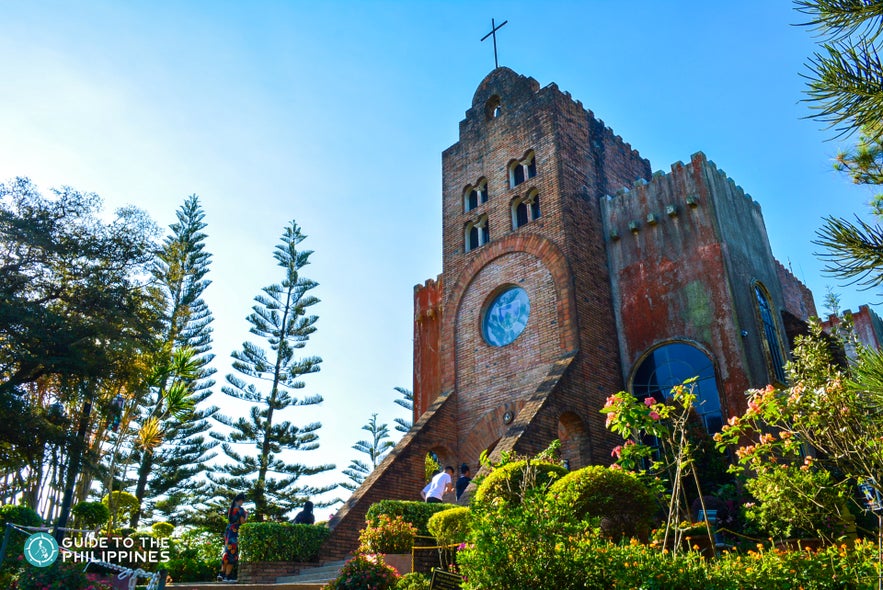
Nestled in the lush highlands of Batangas Province, near the cool mountain escape of Tagaytay City, Caleruega Church—also known as the Transfiguration Chapel—is one of the most serene and picturesque churches in the Philippines. Though located in Nasugbu municipality of Batangas Province, it’s often included as a popular side trip from Tagaytay City, making it a favorite destination for spiritual retreats, family getaways, and weddings.
Built in 1995 by Filipino Dominicans, Caleruega Church was named after the birthplace of St. Dominic de Guzman, founder of the Order of Preachers. It was designed to mirror the peaceful charm of the original town of Caleruega in Spain. Set atop a hill surrounded by landscaped gardens, koi ponds, and forest trails, the church offers sweeping views of the Batulao Mountains and the surrounding countryside.
Because of its idyllic scenery and tranquil atmosphere, Caleruega Church has become one of the most sought-after venues for destination weddings in the Philippines. Its rustic stone façade and panoramic views create an unforgettable backdrop for couples seeking a romantic ceremony close to nature.
The church’s proximity to Tagaytay City tourist spots also makes it a perfect stop for travelers looking to explore nearby cafes, gardens, and scenic viewpoints. You can visit as part of a tour of Tagaytay City’s scenic attractions from Manila City for a convenient day trip.
If you’d like to discover more of the area’s cool-climate countryside and cultural charm, there are plenty of curated Tagaytay tours to choose from.
11. Baclayon Church (Bohol Island)

Located on the scenic shores of Bohol Island, the Baclayon Church—officially known as the Church of Our Lady of the Immaculate Conception—is one of the oldest stone churches in the Philippines. Declared a National Cultural Treasure and a National Historic Landmark, it stands as a proud testament to Bohol’s deep Catholic heritage and colonial past.
The church’s origins date back to 1596, when Jesuit missionaries established one of the first Christian communities in the Visayas. The current coral-stone structure was completed in 1727 using limestone blocks cemented with egg whites, molasses, and lime—a traditional construction technique that has helped the church endure for centuries.
Despite the damage it sustained during the 2013 earthquake in Bohol Island, Baclayon Church has been carefully restored and continues to serve as an active parish. Visitors often remark on its warm and welcoming atmosphere. Entry to the church is through a small museum—once a convent—that now houses religious relics and antiques from as far back as the 16th century.
As one of the must-see Bohol tourist spots, Baclayon Church offers a meaningful glimpse into the island’s spiritual and historical roots. You can visit it as part of guided Bohol tours that also include attractions like the Chocolate Hills and the Tarsier Sanctuary.
For travelers planning a longer stay, there are also Bohol vacation packages that combine cultural visits, countryside adventures, and island escapes for a complete experience.
10. Barasoain Church (Bulacan Province)

Located in Malolos City, the Barasoain Church, also known as Our Lady of Mount Carmel Parish, is a Roman Catholic church recognized as one of the best tourist spots in Bulacan Province.
Built during the Spanish colonial period, Barasoain Church is considered the cradle of the Philippine Republic. Three major historical milestones took place here: the convening of the First Philippine Congress in 1898, the drafting of the Malolos Constitution in 1899, and the inauguration of the First Philippine Republic that same year. These events solidified its reputation as the “Cradle of Democracy in the East.”
Beside the church stands the old convent, now home to the Museo ng Republika ng 1899. Inside, visitors can explore five galleries that narrate the formation of the First Philippine Republic. The museum also features a light-and-sound presentation on the Malolos Congress and a stereoscopy chamber displaying rare historical images.
You can visit Barasoain Church as part of Bulacan tours that highlight the province’s cultural and religious landmarks.
For a more immersive experience, consider booking Bulacan packages that combine historical attractions, culinary adventures, and local artistry into one enriching getaway.
9. Santa Maria Church (Ilocos Sur Province)
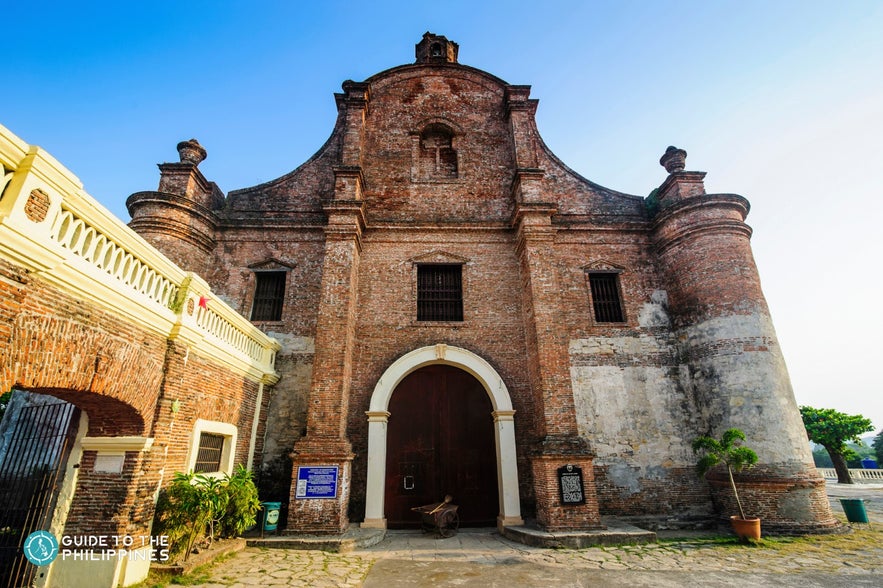
Perched on a hill in the historic province of Ilocos Sur, the Santa Maria Church, also known as the Church of Our Lady of the Assumption, is one of the most remarkable examples of Spanish colonial architecture in northern Luzon region. The province is known for its centuries-old structures and cobblestoned streets, especially in Vigan City.
Recognized as one of the UNESCO World Heritage Sites in the Philippines, Santa Maria Church is part of the collection of Baroque Churches built during the Spanish period. Constructed in 1769, the church complex once served as both a fortress and a place of worship, reflecting the region’s history of Spanish friar and military influence. Its distinctive brick-and-mortar façade, elevated position, and watchtower-like belfry set it apart from other churches in the country.
Visitors must climb a long stone staircase to reach the church, but the effort is well rewarded with panoramic views of the surrounding countryside. Despite its simple interior, its peaceful ambiance and lush green surroundings make it one of the most scenic and spiritual spots in Ilocos Sur Province. Near the entrance stands a unique image of Our Lady of the Assumption atop a tree—one of the church’s most cherished symbols.
The church grounds are open to visitors and make for a lovely spot to stroll, reflect, and take photos. It’s widely regarded as one of the best stops among Ilocos Sur and Norte tourist spots, offering both historical insight and serene beauty.
You can visit Santa Maria Church as part of Ilocos tours that explore the region’s cultural and heritage landmarks. There are also Vigan City tours that often include a side trip to Santa Maria, perfect for travelers who want to see more of the province’s UNESCO-recognized sites.
For a multi-day trip, consider booking Ilocos vacation packages that combine Santa Maria Church with the top attractions in the cities of Vigan, Laoag, and the town of Pagudpud.
8. Molo Church (Iloilo Province)
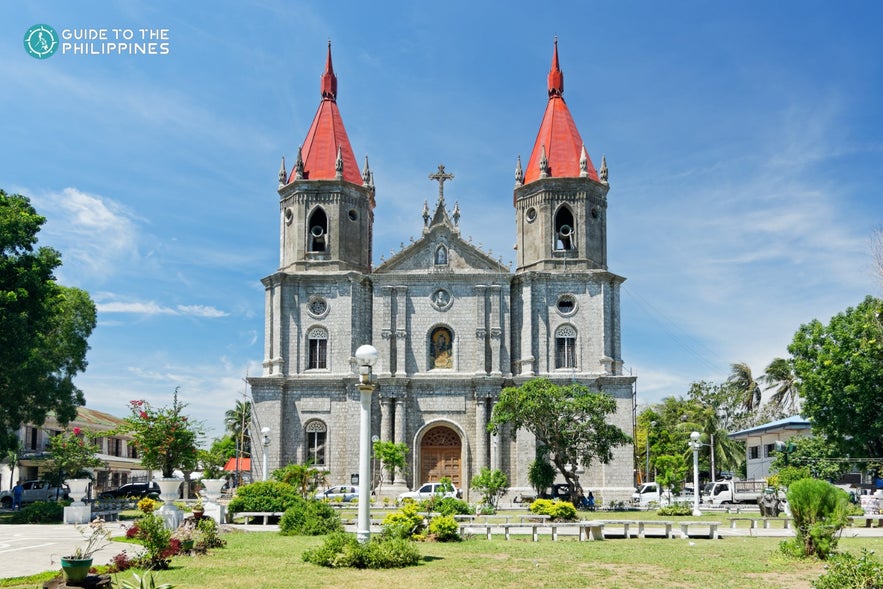
Located in the heritage-rich province of Iloilo, the Molo Church, officially known as St. Anne Parish Church, is one of the most beautiful and historically significant churches in the Visayas region. Iloilo is known for its grand Spanish-era churches, ancestral mansions, and world-class island destinations like Gigantes Islands (also called Islas de Gigantes).
Molo Church stands out as the only Gothic-Renaissance church in the Philippines outside of Manila. Built in 1831, it is made primarily of white coral stone and features red spires that crown its twin bell towers—an iconic sight in the district of Molo. Its pointed arches, ornate altars, and high ceilings perfectly capture the elegance of Gothic architecture, earning it a place among the most admired Iloilo tourist spots.
Known as a “feminist church,” Molo Church is the only one in the country that exclusively features female saints. Sixteen statues of women saints are displayed in two rows along the nave, while an image of St. Anne, the church’s patroness, stands at the center of the main altar beside statues of the Blessed Virgin Mary and the Holy Trinity.
Inside, the intricate stained-glass windows and antique wooden pews evoke a sense of old-world devotion and artistry. The church remains active today and is a popular stop for both pilgrims and architecture enthusiasts.
You can visit Molo Church as part of guided Iloilo tours that highlight the city’s historic churches, museums, and colonial landmarks.
If you want to explore more of the province’s cultural and natural attractions, consider booking Iloilo vacation packages that combine visits to Molo Church and the scenic islands of the northern area.
7. Daraga Church (Albay Province)
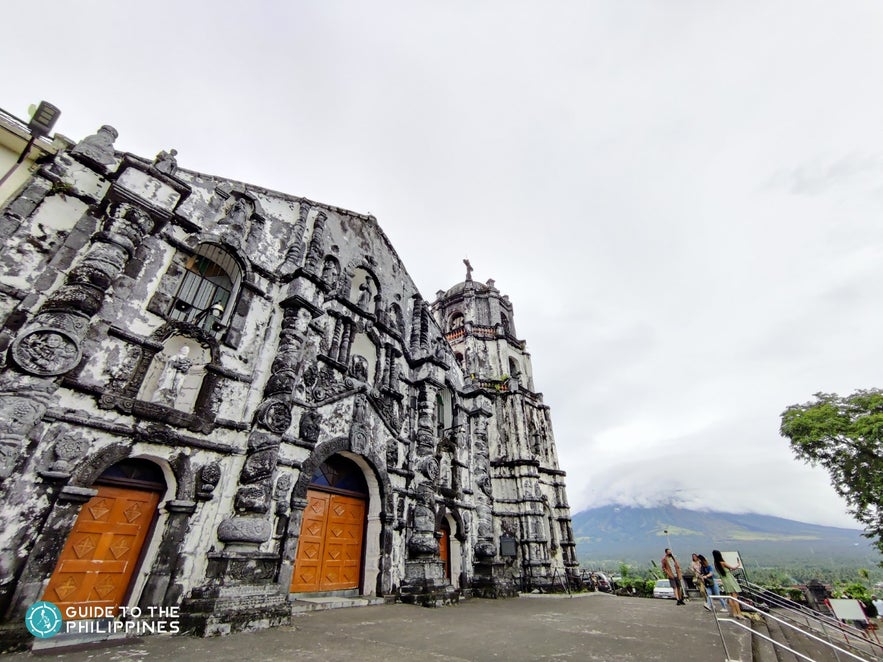
Overlooking the world-famous Mayon Volcano, the Daraga Church, also known as Our Lady of the Gate Parish Church, is one of the most iconic landmarks in Albay Province. Perched on a hilltop in the town of Daraga, this centuries-old church offers a stunning view of Mayon’s perfectly conical peak—making it a favorite spot for both pilgrims and photographers.
Built in 1773 by Franciscan missionaries, the church was established after the nearby town of Cagsawa was destroyed by one of Mayon Volcano’s violent eruptions. The people relocated to safer ground, and Daraga Church became both a symbol of faith and a refuge from nature’s fury.
Its baroque-style façade is carved from volcanic stones and features intricate reliefs of saints, angels, and floral motifs representing heaven and paradise. The retablo-like design of the façade, along with its patron saint Our Lady of the Gate of Heaven, reflects the community’s devotion and gratitude for divine protection.
The church also has deep historical roots—it served as the Japanese army’s command post during World War II and has since been restored while preserving much of its original charm.
Today, Daraga Church stands as one of the top tourist spots in Albay and continues to draw visitors for its religious significance and breathtaking panoramic views.
You can visit this heritage site through guided Albay tours that include stops at nearby attractions such as Cagsawa Ruins, Lignon Hill, and Mayon Volcano viewpoints.
For a more relaxed getaway, consider Albay vacation packages that combine cultural exploration, sightseeing, and scenic stays near Mayon Volcano.
6. Taal Basilica (Batangas Province)
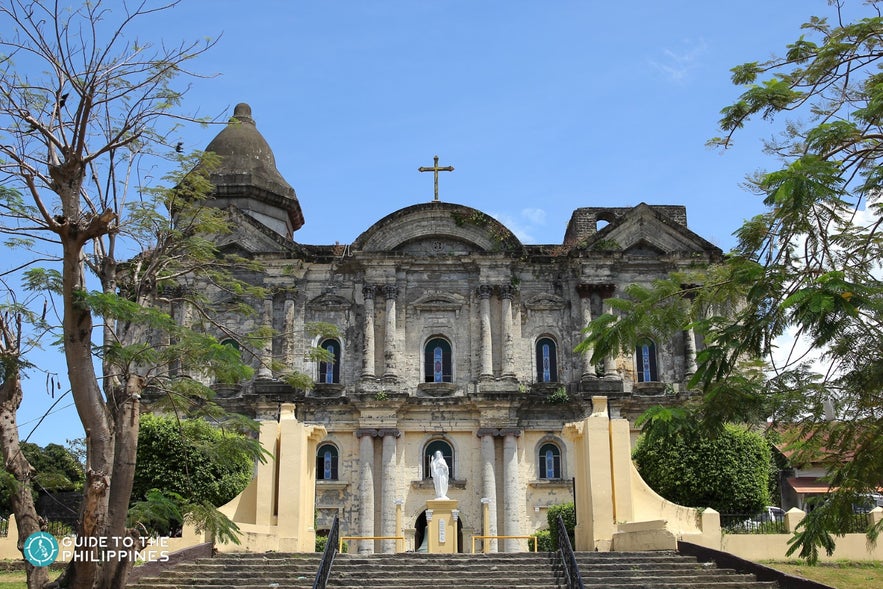
The Taal Basilica, officially known as the Basilica of St. Martin de Tours, is one of the grandest landmarks in Batangas Province. Standing on a hill in Taal Town, this magnificent structure is considered the largest Catholic church in the Philippines and in Asia.
Rising 96 meters high and 45 meters wide, the basilica dominates the town’s skyline and offers a commanding view of the surrounding countryside. Its neoclassical and Baroque-inspired design is credited to architect Luciano Oliver, who rebuilt and redesigned the church in 1856 after a series of destructive eruptions and earthquakes.
The façade, modeled after St. Peter’s Basilica in Rome, features 26 towering Ionic columns and intricate details that highlight its European influence. Inside, the church’s grand altar houses a silver tabernacle and ornate carvings that make it one of the most visually striking heritage churches in the country.
Today, the basilica remains an active parish and a must-see for travelers exploring Batangas tourist spots. It is also a popular pilgrimage destination during Holy Week and a favorite stop for history enthusiasts visiting the heritage town of Taal.
You can include the basilica in guided Batangas tours that feature cultural walks around Taal Town, ancestral houses, and scenic lakeside views.
5. San Agustin Church (Manila City)

Located inside the historic walls of Intramuros, the San Agustin Church is the oldest stone church in the Philippines and one of the most important religious and historical landmarks in the country. It stands as a timeless witness to the Spanish colonial era and centuries of faith in Manila City.
Built by the Augustinian Order in 1571, the church was originally made of nipa and bamboo and was known as Iglesia y Convento de San Pablo. It was later rebuilt using stone to withstand fires and earthquakes, becoming a prime example of Spanish Baroque architecture in Asia. The current structure, completed in 1607, has survived wars and natural disasters—including World War II, where it was the only building in Intramuros left standing.
San Agustin Church’s grand interior features a high altar adorned with intricate carvings, trompe l’oeil (illusion-style) ceiling paintings, and antique chandeliers that add to its old-world charm. It also houses the tomb of Miguel López de Legazpi, the first Spanish governor-general of the Philippines.
In recognition of its architectural and historical significance, the church was declared a UNESCO World Heritage Site in 1993 as part of the Baroque Churches of the Philippines. It remains a symbol of endurance and artistry, attracting visitors from around the world.
San Agustin Church is one of the top Manila tourist spots. The surrounding Intramuros area is filled with museums, plazas, and centuries-old buildings that bring Manila City’s colonial history to life.
For a deeper cultural experience, you can explore it as part of guided Manila tours that include stops at Fort Santiago, Manila Cathedral, and other historic attractions within Intramuros old town.
4. Miagao Church (Iloilo Province)
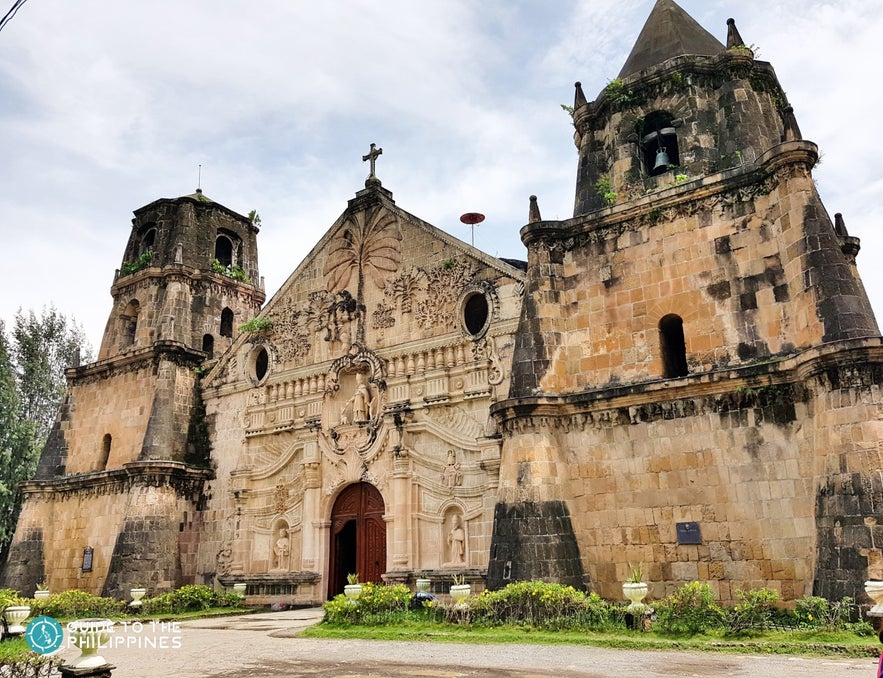
Located in the southern part of Iloilo province, the Miagao Church—officially known as the Church of Saint Thomas of Villanova—is one of the most iconic and historically significant landmarks in the Philippines. Completed in 1786, it is part of the four Baroque Churches of the Philippines collectively designated as UNESCO World Heritage Sites for their unique architecture and cultural importance.
The church’s design reflects a masterful fusion of Spanish, Chinese, and Muslim influences, making it a standout among the many heritage churches in Iloilo. Its façade is especially famous for its intricate stone carvings depicting a mixture of biblical and local imagery. The central relief above the wooden doors portrays St. Thomas of Villanova, the town’s patron saint, framed by life-size sculptures of the Pope and St. Henry.
One of Miagao Church’s most distinctive features is its asymmetrical twin belfries—one with two levels and the other with three—flanking the main structure. The golden retablo inside the church glows with ornate details that beautifully contrast its otherwise simple stone interior.
Beyond its architectural beauty, Miagao Church stands as a symbol of faith and resilience, having withstood earthquakes, fires, and wars for more than two centuries. It remains one of the best-preserved examples of colonial Baroque architecture in the Philippines and a must-see for cultural travelers and pilgrims alike.
3. Basilica Minore Del Santo Niño (Cebu Province)
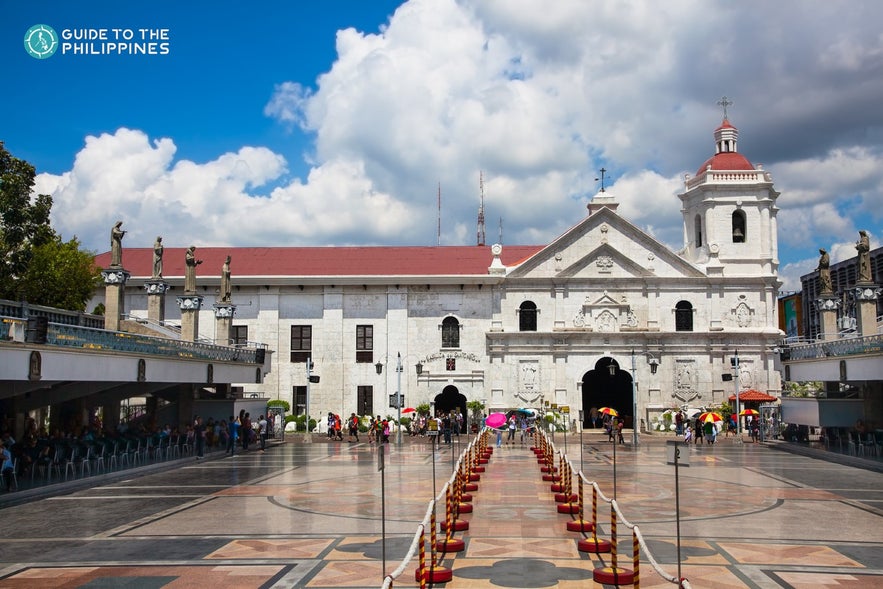
Located in the heart of Cebu Island Province, the Basilica Minore del Santo Niño is one of the most important religious landmarks in the Philippines. Founded in 1565, it is the oldest Catholic church in Cebu Island Province and home to the revered image of the Santo Niño de Cebu, the capital city’s patron saint representing the Child Jesus.
The basilica stands on the exact spot where Spanish explorers discovered the image of the Santo Niño inside a burned wooden box—a symbol of faith that has endured for centuries. The Augustinian friars were entrusted with the sacred image and built a small chapel on the site, marking the beginning of Christianity in the country. After several reconstructions due to fires and natural disasters, the present stone church was completed in 1739. In 1965, Pope Paul VI elevated it to the rank of Basilica Minore.
Architecturally, the church is a blend of Muslim, Romanesque, and neoclassical styles. Its coral stone façade retains the natural color and texture of its original materials, while the bell tower stands in harmony with the adjoining convent. The combination of these design elements makes it one of the finest examples of colonial church architecture in the Philippines.
Each January, the basilica becomes the focal point of Cebu City’s grand Sinulog Festival, where thousands of devotees and tourists gather to honor the Santo Niño with vibrant dances and processions. Visiting the basilica is one of the top experiences among the top tourist spots in Cebu, offering both cultural insight and spiritual reflection.
Travelers can include this iconic site in guided Cebu tours that also visit nearby heritage landmarks like Magellan’s Cross and Fort San Pedro.
For a more immersive exploration of the island’s history and natural beauty, consider booking Cebu vacation packages that combine cultural attractions, island-hopping, and local cuisine.
2. Paoay Church (Ilocos Norte Province)
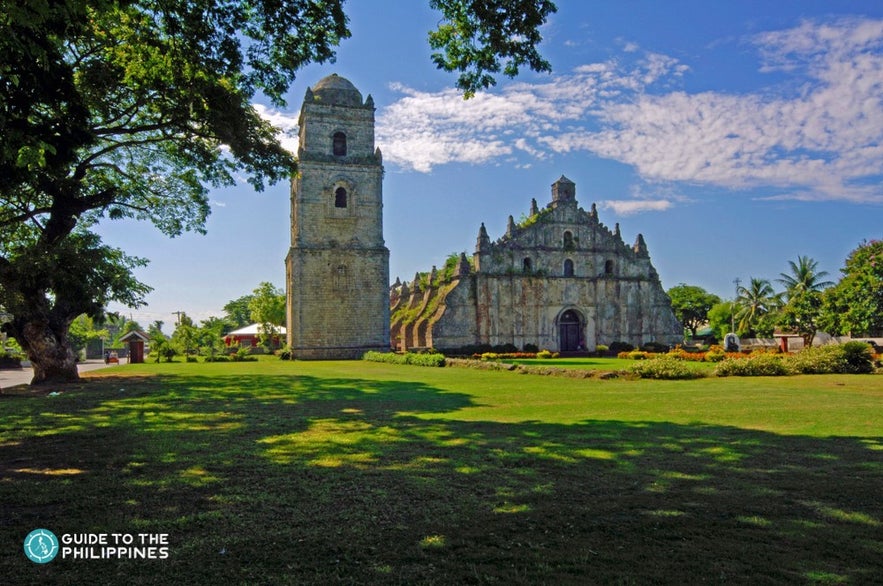
Located in the quiet town of Paoay in northern Luzon region, the Paoay Church—officially known as the Saint Augustine Church—is one of the most striking heritage landmarks in the Philippines. The town lies close to Laoag City, a gateway to Ilocos Norte Province’s scenic sand dunes and coastal rock formations.
Completed in 1710 after two decades of construction, Paoay Church is one of the four Baroque Churches of the Philippines collectively recognized as UNESCO World Heritage Sites. Its massive structure, built from coral stones and bricks, showcases a fascinating blend of Baroque, Gothic, Chinese, and Javanese design influences.
The church’s most defining features are its massive buttresses—24 in total—jutting out from the sides and back of the building to protect it from earthquakes. Its three-story bell tower, built separately from the main church, has also played an important role in Philippine history. During the Spanish period, it served as an observation post for Katipuneros, and later during World War II, Filipino guerrillas used it as a lookout against Japanese forces.
Designated a National Cultural Treasure in 1973, Paoay Church remains a powerful symbol of faith and resilience. A multimillion-peso restoration project led by the National Historical Commission in 2018 helped preserve its grandeur for future generations.
Visiting this architectural masterpiece is among the highlights of Laoag tours and is a must for anyone exploring the cultural heart of Ilocos Norte Province.
1. Manila Cathedral (Manila City)

Located in the historic walled city of Intramuros, the Manila Cathedral—officially known as the Manila Metropolitan Cathedral-Basilica—is the seat of the Archbishop of Manila and one of the most significant religious structures in the country. It stands at the center of Plaza de Roma and remains a symbol of the enduring Catholic faith in Manila City.
The cathedral’s origins date back to 1571, when a simple church made of bamboo and nipa was built by Spanish priest Juan de Vivero and dedicated to Our Lady of the Immaculate Conception. Over the centuries, it has been destroyed and rebuilt multiple times due to fires, earthquakes, and wars. The present structure, completed in 1958 under architect Fernando Ocampo, is the eighth and most enduring version, blending Romanesque revival design with modern engineering.
Inside, the cathedral features intricately designed stained-glass windows, a grand marble altar, and detailed mosaics depicting biblical scenes. It has served as the venue for many important national religious events and papal visits, including those of Pope Paul VI, Pope John Paul II, and Pope Francis.
Visiting the Manila Cathedral is one of the top things to do among Intramuros tours. The area around it is perfect for walking or biking, allowing visitors to admire other historical sites like Fort Santiago and Plaza San Luis.
For travelers exploring more of the capital, you can extend your trip with Manila vacation packages that combine city tours, cultural experiences, and day trips from Manila.
Those who prefer flexibility can also book Manila car rental services for convenient travel to nearby attractions and provinces.
Frequently Asked Questions about Visiting Churches in the Philippines
What is the best time to visit churches in the Philippines?
The best time to visit churches in the Philippines is during the dry season, from December to May, when weather conditions are ideal for travel and sightseeing. Many travelers also plan church visits during Holy Week (March or April) for pilgrimage tours and religious observances.
Do I need to follow a dress code when visiting churches?
Yes. Visitors are encouraged to wear modest clothing when entering churches. Avoid sleeveless tops, short shorts, or revealing outfits as a sign of respect in sacred spaces.
Can non-Catholics visit the churches in the Philippines?
Absolutely. Most churches welcome visitors of all faiths who wish to appreciate their historical, cultural, and architectural beauty. Just remember to maintain quiet and decorum during religious services.
Are guided tours available for church visits?
Yes. Many destinations offer guided heritage and pilgrimage tours that include several notable churches in one itinerary. These tours often provide historical background, local insights, and convenient transportation between sites.
Which churches are recognized as UNESCO World Heritage Sites?
Four Baroque Churches in the Philippines are UNESCO World Heritage Sites: San Agustin Church in Manila City, Miagao Church in Iloilo Province, Paoay Church in Ilocos Norte, and Santa Maria Church in Ilocos Sur.
Why are churches important in Philippine culture?
Churches in the Philippines are more than places of worship—they’re living symbols of the country’s colonial history, artistry, and faith. They also serve as community centers for local festivities, cultural traditions, and national celebrations.
Can I include church visits in my travel itinerary?
Yes. Church visits can easily be combined with cultural city tours, countryside trips, or pilgrimage routes across the island regions of Luzon, Visayas, and Mindanao. Many travelers plan their itineraries around visiting historic or scenic churches near their chosen destinations.
Visit the Top Churches in the Philippines

Beyond its pristine beaches and breathtaking islands, the Philippines is a treasure trove of culture, history, and faith. From grand cathedrals in the capital to centuries-old stone churches in the countryside, these sacred landmarks reflect the nation’s deep devotion and enduring artistry.
Visiting these beautiful churches is one of the most meaningful ways to experience the Philippines. Each tells a story of resilience, creativity, and community—echoing centuries of faith that continue to shape Filipino life today.
Whether you’re joining a pilgrimage, exploring historic towns, or simply appreciating the country’s architectural wonders, these churches offer a deeper connection to the Philippines’ soul. A journey through them is not just a cultural adventure—it’s a glimpse into the heart of the Filipino spirit.

